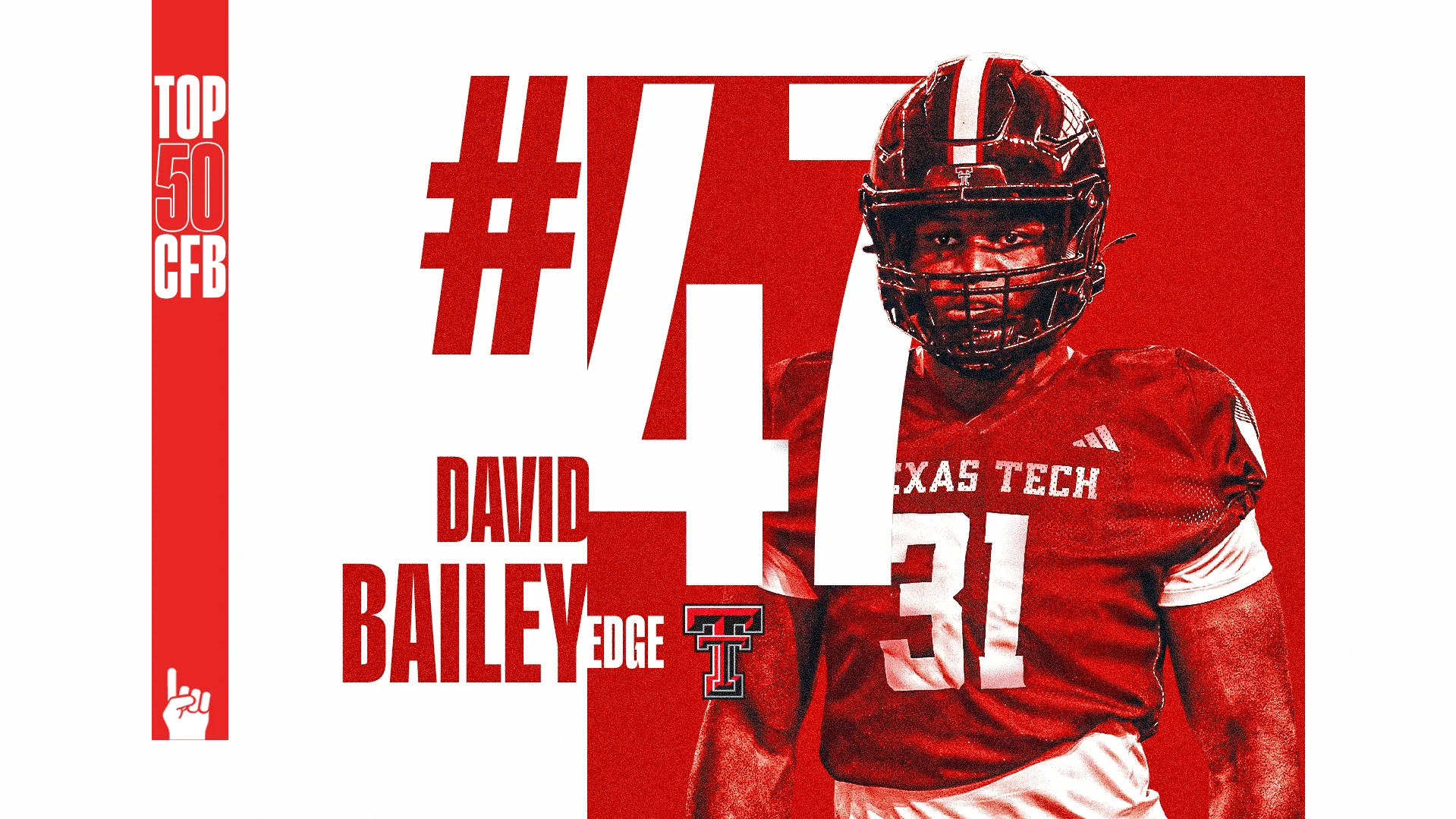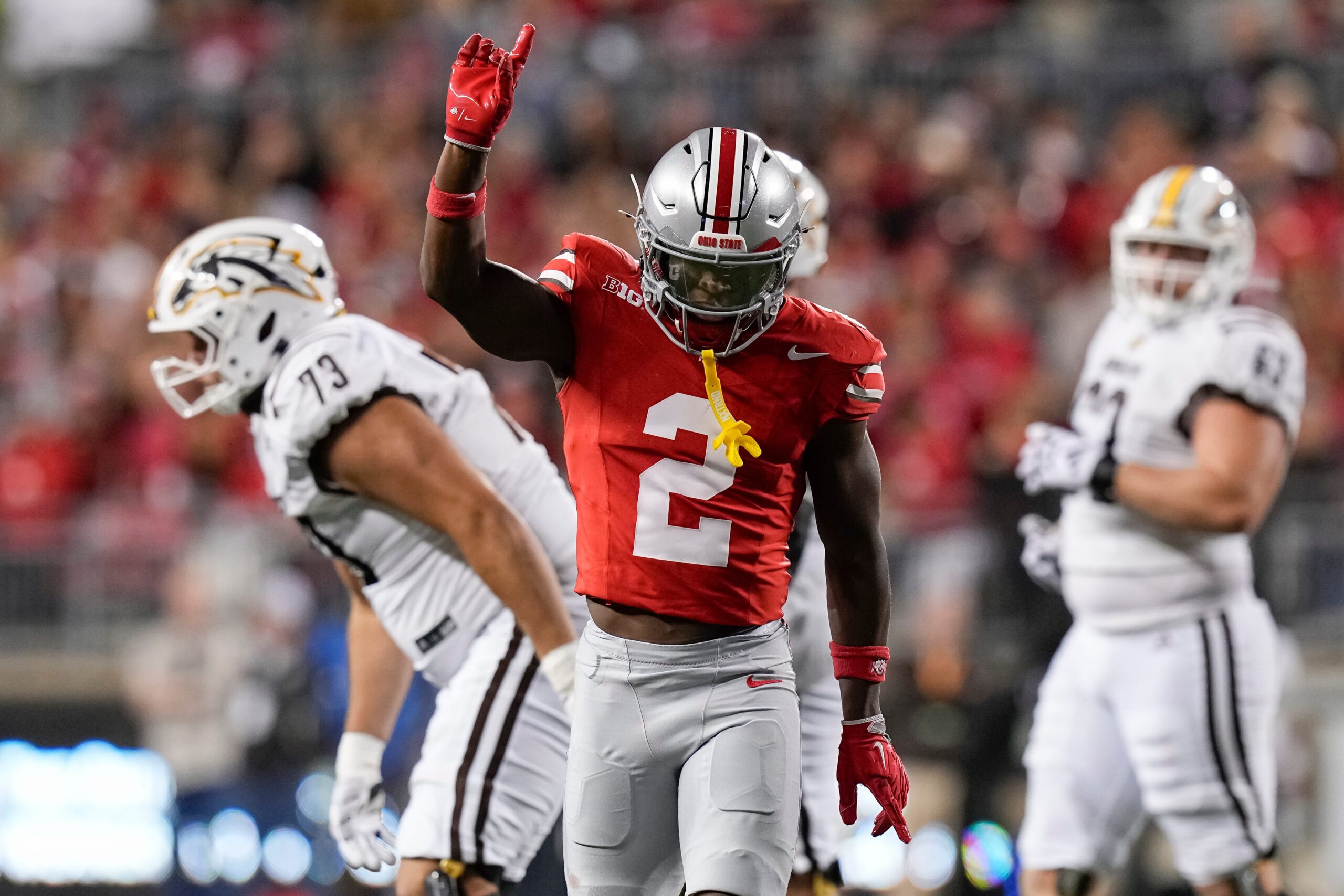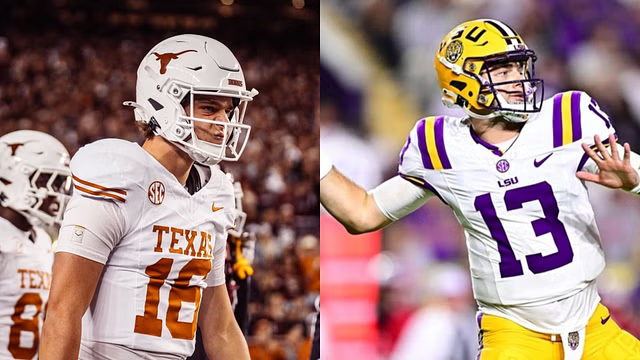By Charlie Campbell.
Send Charlie an e-mail here: [email protected]
Follow Charlie on Twitter @draftcampbell for updates.
This page was last updated April 10, 2013. Follow me @walterfootball for updates.
Position Review: Cornerbacks
Cornerback Class
Early-round talent: B
Mid-round: C+
Late-round: D
Overall grade: C+
2012 prospects vs 2013
Morris Claiborne > DeMarcus Milliner
Stephon Gilmore > Xavier Rhodes
Dre Kirkpatrick > Desmond Trufant
Janoris Jenkins > Johnthan Banks
Casey Hayward > Jamar Taylor
Jamell Fleming < Blidi Wreh-Wilson
Dwight Bentley < Darius Slay
Jayron Hosley < David Amerson
This year’s draft class features a decent group of cornerbacks, but the group is not nearly as talented as the class that was in the 2012 NFL Draft. Last year was an excellent time to draft a cornerback since there were cover corners and ballhawks available in the first three rounds. That isn’t even close to the case in the 2013 NFL Draft.
Claiborne and Gilmore showed some promise as a rookie, while Janoris Jenkins and Casey Hayward made big impacts. The Rams took Jenkins in the second round, but he would’ve been a high first-round pick if he had stayed out of trouble in college. Thus, it is hard to compare him to any corner in either class as Jenkins is clearly better than all of them as a man-cover corner – with the possible exception of Claiborne.
The 2012 NFL Draft’s cornerbacks were an Grade-A class, so they should dominate the comparison. The 2013 NFL Draft class is mediocre by comparison. If you were to mix the classes, Milliner and Rhodes would go behind Gilmore. Trufant and Kirkpatrick are pretty equal, but I give the edge to Kirkpatrick.
Banks, Taylor and Wreh-Wilson are all inferior prospects compared to Hayward, but that 2013 trio consists of three quality second-rounders. I would put them in the same range as Fleming and Bentley. Amerson and Slay would go ahead of Hosley.
It wouldn’t surprise me at all if years from now the two best corners to come out of these two drafts are Jenkins and Hayward.
Beyond these eight from the 2013 NFL Draft class there is good depth behind them. Southeast Louisiana’s Robert Alford, Oregon State’s Jordan Poyer, William & Mary’s B.W. Webb, Rutgers’ Logan Ryan, Connecticut’s Dwayne Gratz, San Diego State’s Leon McFadden and LSU’s Tyrann Mathieu are all potential values to be had on the second or third day.
Safest Pick: DeMarcus Milliner, Alabama

Milliner looks like a complete corner for the NFL with the ability to play man coverage on an island. If he somehow isn’t reliable as a man corner, at the very worst, he should be a good zone corner. Milliner has size, speed, ball skills, good run defense and instincts. All of that would combine to make him a good zone cornerback if he is unable to play man. As long as Milliner stays healthy, he looks like a lock to be a starter and quality NFL cornerback for many years.
Biggest Bust Potential: David Amerson, N.C. State

Amerson was viewed as a high first-rounder and a potential top-five pick for the 2013 NFL Draft at this time last year. What a difference a year makes; the junior was torched repeatedly for long touchdowns in 2012. This vulnerability first appeared in the opener against Tennessee and was an issue all season. One ESPN game announcer claimed Amerson was beaten for 10 touchdowns this year.
Amerson is a gambler who is constantly looking to jump routes to snag an interception. That left him prone to getting burned by a lot of double moves in 2012.
The 6-foot-1, 205-pounder could have problems with hip flexibility and turning to run with NFL speed-receivers. Amerson looks like he could have a lot of issues with deep-threat wide outs. Amerson may go in the first three rounds, but there is definitely some real risk in selecting him. He should go to a zone scheme.
Cornerback Rankings by Attributes
Man-Coverage Ability:
NFL prototype: Darrelle Revis, Jets
- DeMarcus Milliner
- Desmond Trufant
- Xavier Rhodes
- Jamar Taylor
- Johnthan Banks
- Darius Slay
- Blidi Wreh-Wilson
- David Amerson
Recap: Going off the opinion of Jon Gruden, which is now a consensus thought around the league, the most important two positions on a defense are an elite pass-rusher off the edge and a shutdown cornerback. The NFL is driven by passing, and a shutdown corner can limit the opposition’s ability to score points by taking the best receiver away from a quarterback. Teams throughout the league are searching hard for that kind of cornerback talent.
The two best cover corners in this draft class are Milliner and Trufant. Both of them have the ability to run with speed receivers and the size/strength combination to battle big receivers. Milliner is ranked first because he is bigger, does a better job of playing the ball and is more physical. However, Trufant is an excellent man corner who makes it very difficult for receivers to get separation.
Rhodes looked better in man coverage during his sophomore season than he did as a junior in 2012. He closed out 2011 by shutting down Notre Dame wide out Michael Floyd. Rhodes did pretty well against Clemson’s aerial attack this year, but had some lapses over the course of the season. Still, he has the ability to be a good press-man corner in the NFL.
Taylor showed man-coverage ability as a senior. He has the speed and flexibility to run with receivers in and out of their breaks. Taylor could function in an NFL man scheme.
Banks and Slay played a mixture of man and zone at Mississippi State. Both could continue to play both concepts in the NFL, but it may not be good to keep either exclusively in man coverage.
Wreh-Wilson (6-1, 195) had a strong senior season when playing man coverage. He would probably be better off as a zone corner given his size.
Amerson was very weak in man coverage in 2012. He was constantly being beaten by double moves for big downfield plays. Either Amerson needs to rework his game and get more disciplined with better feet, or he will have to be a zone corner.
Zone Corner:
NFL prototype: Charles Tillman, Bears
- DeMarcus Milliner
- Johnthan Banks
- Xavier Rhodes
- Desmond Trufant
- David Amerson
- Blidi Wreh-Wilson
- Darius Slay
- Jamar Taylor
Recap: Many teams mix man and zone coverage, so a corner who can excel in both is very valuable. Milliner did just that at Alabama. The Crimson Tide liked to vary its coverages, and he was excellent while playing zone. Milliner covers his territory, stays disciplined and understands the concepts. He is also adept at disguising his coverage, thus he’s ranked first again.
Banks and Rhodes are very good zone corners. Each uses his size to help cover receivers who run into his area. Both Bank and Rhodes will fit well into NFL zone schemes.
Trufant played more zone as a junior than he did as a senior. He was a solid zone corner and had no issues playing the concept. Amerson played a lot of man coverage, and his all-around game needs to become more disciplined. That will be critical for him to thrive in a zone scheme in the NFL.
None of the trio of Wreh-Wilson, Slay or Taylor look like liabilities as zone corners. Each all will need some coaching up, but Wreh-Wilson has the potential to be an exceptional zone corner.
Ball Skills:
NFL prototype: Asante Samuel, Falcons
- David Amerson
- Johnthan Banks
- DeMarcus Milliner
- Darius Slay
- Jamar Taylor
- Desmond Trufant
- Blidi Wreh-Wilson
- Xavier Rhodes
Recap: This was a tough choice because Amerson, Banks, Milliner and Ryan all have tremendous ball skills. Amerson was ranked first because he is the most adept at intercepting passes. Banks has great hands and was consistent with his ability to pick off passes the past four years. Milliner is extremely adept at timing breakups to slap passes away for incompletions. All three of these corners could be ballhawks in the NFL.
Slay had an improved senior season with five interceptions and six passes batted away. Teams targeted him more than Banks, and Slay did a nice job of playing the ball.
Taylor showed impressive ball skills in 2012 and at the Senior Bowl. He has the potential to continue to improve his ability to take the ball away. Trufant didn’t get to show his ball skills much as a senior because teams rarely threw his direction, but he had a combined 16 passes defensed as a junior. Trufant’s ball skills were solid at the Senior Bowl.
Wreh-Wilson and Rhodes flash the ability to play the ball, but they need to be more consistent. Both are so consumed with tight coverage; each could stand to improve his awareness to play the pass.
Run Support:
NFL prototype: Richard Sherman, Seahawks
- Johnthan Banks
- David Amerson
- DeMarcus Milliner
- Desmond Trufant
- Jamar Taylor
- Blidi Wreh-Wilson
- Xavier Rhodes
- Darius Slay
Recap: Some college and NFL teams aren’t too concerned with how corners play the run, but good run-defenders can prevent big gains on the edge and make tackles to prevent long carries. Ryan is a phenomenal run-defender and was all the over the field for Rutgers. He totaled 94 tackles as a junior and showed great awareness to get in position to make the stop. Ryan’s run defense is NFL ready.
Banks (63 tackles) and Amerson (61 tackles) are both excellent run-defenders. They crash into the tackle box and are good tacklers. Both are strong and don’t hesitate to mix it up. Banks and Amerson should both be quick contributors to sound run defense.
Milliner was a strong run-defender in 2012, totaling 54 tackles. The junior was physical with backs, but needs to get better with his tackling technique. Milliner had more missed tackles than he should have had.
Trufant made a bigger impact defending the run as a junior. The senior had only 36 tackles in 2012, but that doesn’t tell the whole story since he had 64 stops in 2011. Trufant was executing his assignments this year and wasn’t expected to make an impact on interior running plays.
Taylor (46), Wreh-Wilson (46), Rhodes (39) and Slay (40) have some room for improvement, but none of them are liabilities as run-defenders.
Agility:
NFL prototype: Nnamdi Asomugha, Eagles
- Desmond Trufant
- DeMarcus Milliner
- Jamar Taylor
- Xavier Rhodes
- Darius Slay
- Johnthan Banks
- Blidi Wreh-Wilson
- David Amerson
Recap: The agility to run with receivers in and out of their breaks is a critical attribute for any good cover corner. Trufant is the top of the 2013 NFL Draft class in this respect. He is quick with fluid hips and doesn’t take false steps. Trufant has the ability to run the route with the receiver to provide blanket coverage.
Milliner also is very agile. He can run with receivers and tight ends down the field. Milliner rarely takes false steps and has loose hips.
Taylor is a fast and fluid athlete. He illustrated plus agility at the Senior Bowl and Combine. Rhodes (6-2, 210) has good agility for such a big corner. He needs to work on his technique, but with good coaching it shouldn’t be a problem for him in the NFL.
Slay is an agile corner who doesn’t have problems turning and running with receivers. Banks moves well for a bigger corner. Wreh-Wilson, on the other hand, needs to get more consistent with his agility. He looks stiff sometimes, but on other occasions, he’s fluid.
The same can’t be said for Amerson. I think he could struggle to turn and run with speed receivers of the Mike Wallace variety.
Read-and-React:
NFL prototype: Richard Sherman, Seahawks
- DeMarcus Milliner
- Johnthan Banks
- Xavier Rhodes
- Blidi Wreh-Wilson
- Desmond Trufant
- Darius Slay
- David Amerson
- Jamar Taylor
Recap: Corners need to be able to read the offense and quickly react to the run or pass. This is especially critical to getting off the field in third-and-manageable situations. Milliner is the best read-and-react corner in this draft class. He can be source of big plays, but uses his skills to get in position to break up a lot of passes. Milliner tied with Utah State’s Will Davis to lead the nation with 22 total passes broken up in 2012.
Banks is excellent as well and was skilled at reading the offense to get in position to make plays. He’s been doing that at a high level since he broke into the lineup as a freshman in 2009.
Rhodes has good instincts and route recognition. The Seminoles kept him in man coverage on outside receivers, so it was harder for him to get in on some plays because so many went away from him. He shouldn’t have a read-and-react weakness at the next level.
Wreh-Wilson and Trufant both showed plus read-and-react skills at the Senior Bowl. Both definitely enter the NFL with a strong foundation. Amerson, Slay and Taylor all could improve their read-and-react skills. All of them sometimes seem a little delayed in their recognition.
Instincts:
NFL prototype: Darrelle Revis, Jets
- Johnthan Banks
- DeMarcus Milliner
- Desmond Trufant
- David Amerson
- Xavier Rhodes
- Darius Slay
- Blidi Wreh-Wilson
- Jamar Taylor
Recap: I remember speaking with Ronde Barber a couple of years ago, and he said Revis’ instincts were off the charts. Barber said that Revis made plays which made it seem like he had eyes in the back of his head. Barber also said Revis is so smart about reading receivers and understanding what they’re about to try and do.
For cornerbacks, instincts doesn’t equate to just picking off passes. Instincts also are about reading the route and the quarterback. It starts before the snap when the offense lines up.
Banks is very instinctive. He makes interceptions, gets in position to make tackles against the run and also can force some fumbles. One can tell that Banks is an experienced 4-year starter and a pure football player.
Milliner is only a fraction behind Banks. The Alabama corner is very good at reading receivers and cornerbacks to force incompletions. Trufant is very experienced and also has a lot of starting experience. He enters the next level with plus instincts and the ability to read quarterbacks.
One might think that Amerson is rated too low considering he intercepted 18 passes over the past two seasons, but he did a lot of gambling rather than playing disciplined football with superb instincts leading to his picks. Amerson won’t be able to take so many chances in the NFL.
Rhodes has pretty good route recognition, but didn’t show the instincts to make a lot of splash plays. Slay has decent instincts as an overall defender. He could use a little more work on his route recognition. Wreh-Wilson and Taylor don’t have bad instincts, but neither of them looked particularly instinctive.
Recovery:
NFL prototype: Antonio Cromartie, Jets
- Desmond Trufant
- DeMarcus Milliner
- Xavier Rhodes
- Johnthan Banks
- Darius Slay
- Jamar Taylor
- Blidi Wreh-Wilson
- David Amerson
Recap: The majority of cornerbacks in the NFL are going to allow some separation against good route-runners, but the good corners have the ability to recover to close the space. It takes short-area burst, but having length also plays a significant factor.
Trufant and Milliner are excellent in recovery. They quickly close any separation and that makes it hard to complete passes against them. An instant after the receiver is open, he’s covered again before the quarterback can complete the pass. Trufant’s recovery at the Senior Bowl was phenomenal. Milliner’s was strong all year for Alabama.
Rhodes generally had good recovery as a junior in 2012. There were a few ugly plays, but he was mostly consistent. Rhodes has a tendency to get nicked up with minor, nagging injuries and sometimes those seem to take away a little burst from him.
Banks, Slay and Taylor have solid, but not exemplary, recovery right now. A receiver gets separation can maintain separation. There were times where Banks would flash a nice ability to close, but he needs to become more consistent. Slay and Taylor should work on getting better at closing the ground in the NFL.
Wreh-Wilson was similar this season. He flashed some recovery skills at the Senior Bowl, but needs to continue to improve.
Amerson’s recovery was absolutely horrible in 2012. When receivers got a step on him, he was toast. Amerson has to make massive improvements to avoid getting burned as much at the next level.
|
|
2026 NFL Mock Draft - Jan. 6
NFL Picks - Jan. 5
NFL Power Rankings - Jan. 5
Fantasy Football Rankings - Sept. 1




